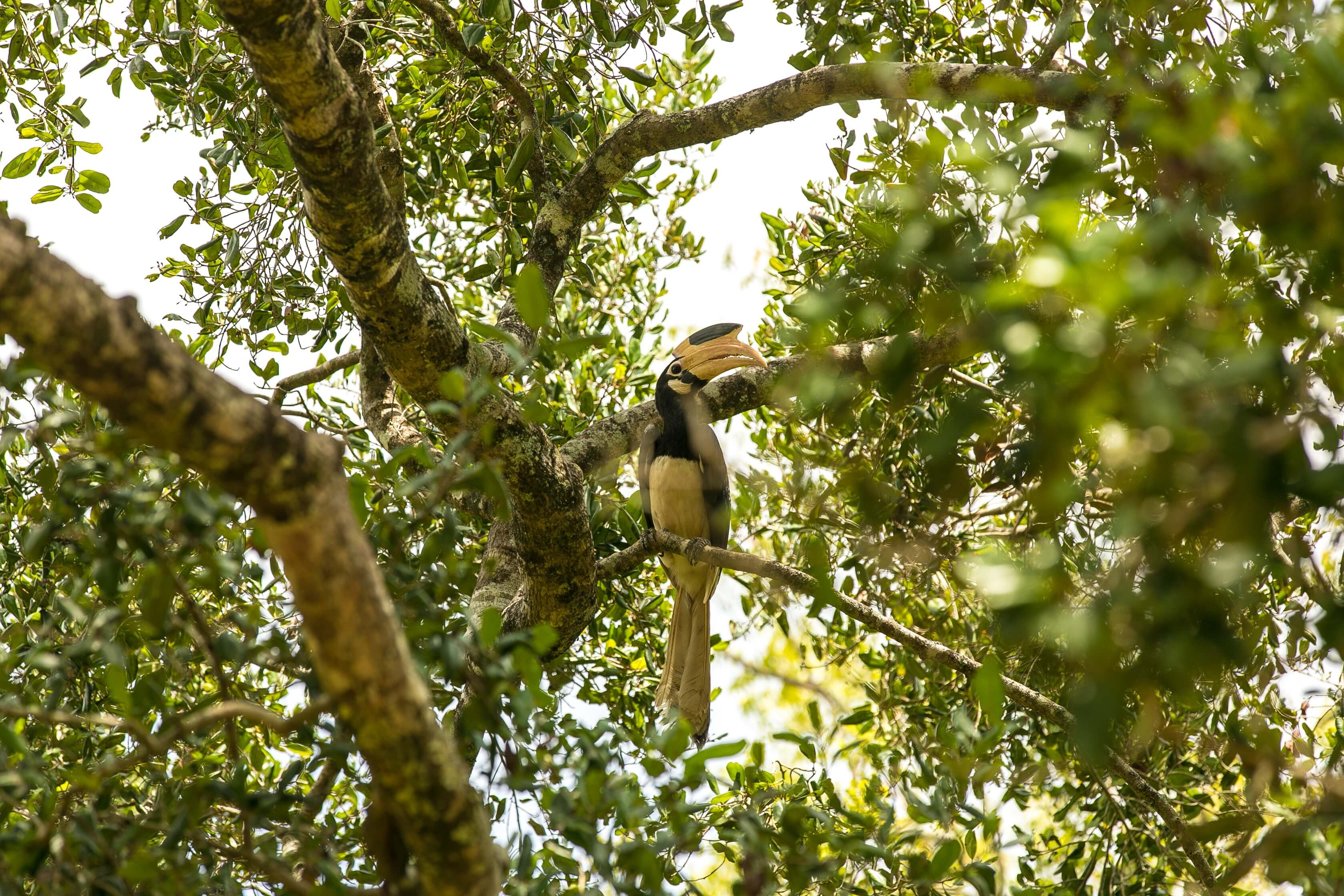Picture a gorgeous maze of lagoons, waterways and sand dunes that glitter in gold when the sun sets while wondering whether or not you should visit the Bundala National Park in Sri Lanka. The Ramsar Convention on Wetlands has recognized this highly important wetland sanctuary that provides shelter to thousands of colorful birds and quite a few bigger mammals.
Introduction
The Bundala National Park is located 245km Southeast of Colombo, on Tissamaharama Road in Hambantota city. The park is world renowned as a wintering ground for aquatic birds that migrate to Sri Lanka to escape the winter season in their respective home countries. This is the only National Park in Sri Lanka where you can see estuarine, saltwater and freshwater crocodiles, all within the same safari ride. The exceptional plant life enhances the beauty of the park, thereby making it more attractive to visitors.
Established in 1969 as a wildlife sanctuary, Bundala was transformed into a National Park in 1993. In addition to being proclaimed as a Ramsar wetland site, UNESCO chose Bundala National Park as a biosphere reserve in 2005, making it the fourth biosphere reserve in Sri Lanka.
What to see at Bundala National Park
Tourists flock in large number to experience the eco-friendly environment of this park. There are seven types of terrestrial habitats and six types of wetlands bringing together the ecological areas on the national park. Don’t forget to inform your Sri Lanka tour operator to book your jeep safari ride to explore the park and all of its natural beauty.
Plants
There are also several kinds of dry and prickly shrubs and herbs that have been spotted in large numbers. There’s a total of 383 plant species, belonging to 90 families. Some popular ones are Hydrilla (with blue-green algae) and the Phytoplankton (in every lagoon).
Reptiles and Amphibians
During your jeep safari ride at Bundala National Park, you will be seeing from a variety of 15 different species of amphibians and 48 species of reptiles. And guess what? The estuarine crocodile species is the largest one alive on this planet! This crocodile is as heavy as 1200kgs, with the male croc being seven meters long and the female one being about three meters in length. You will also see start tortoises, pythons, rat snakes, monitor lizards, cat snakes, whip snakes and endemic flying snakes. To top it all, there are five endangered species of marine turtles that use this national park as a breeding ground.
Mammals
32 varieties of mammals are seen at Bundala National Park, five of them being classified as endangered. In addition to the bird sanctuary, there are also big and attractive wildlife animals such as elephants, sambar, barking deer, common langur, spotted deer, mongoose, jackal, wild boar, fishing cat, and the Sri Lankan leopard walking around at intervals. Also, included in the 324 species of vertebrates are 32 fish species, 197 bird species and 52 butterfly species living in the national park.
Bird Watching at Bundala National Park
Watching birds at this park is one of the most enjoying activities for tourists. About 200 migratory birds come here from all over the world. During your bird watching activity, you will probably spot the Great Flamingo, Sri Lankan Jungle Fowl, Sri Lankan Woodshrike and the Brown-capped Babbler. Some rare sighted birds are the marsh and curlew sandpipers, Kentish plovers, common redshank, ruff, little stints, sand plovers, and the special red-necked phalarope.
Weather Conditions
Average temperatures of 28 degrees Celsius (hot ad dry) are seen at Bundala National Park. Annual rainfall is at an average of 1075mm.
How to get there
Three different routes by road from Colombo:
- Along the coast of Galle, Matara, Tangalle, Hambantota
- Ratnapura, Pelmadulla, Embilipitiya, Hambantota
- Southern Expressway
If you are on a heli tour of Sri Lanka, you can touchdown at Hambantota and easily reach the park by road. If you are on a rail tour, the closest station to get off along the southern coast (from Colombo) is at Beliatta, and then it’s a one hour drive from there.
Major travel destination distances:
- From Colombo – 244kms
- From Kandy – 230kms
- From Bentota – 185kms

